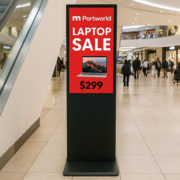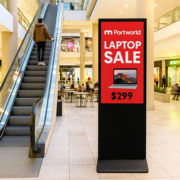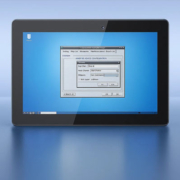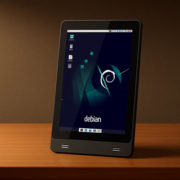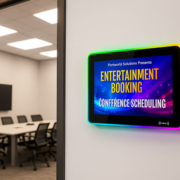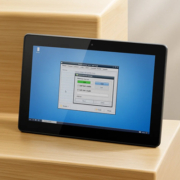What is the Best Digital Signage?
In today’s fast-paced digital world, digital signage has become a crucial tool for businesses, organizations, and public spaces to deliver information, promote products, and engage audiences. From retail stores and restaurants to transportation hubs and corporate offices, digital signage enhances communication through dynamic, real-time visual content. But with so many solutions available, what exactly makes the best digital signage?
1. Clarity and Display Quality
The best digital signage starts with a high-quality display. A full HD or 4K resolution ensures that your message is crisp, vibrant, and easy to read. Depending on the environment, brightness is also a key factor—outdoor or semi-outdoor applications may require high-brightness displays of 500–1000 nits or more to remain visible in sunlight.
Look for:
- IPS technology for wide viewing angles
- Brightness levels suited to your location
- Slim, modern bezels for aesthetic appeal
2. Touch & Interactivity
Modern digital signage isn’t just for viewing—it’s about interacting. Touch screen capability, especially with 10-point capacitive touch, allows users to navigate menus, search directories, complete transactions, or even check-in at events or offices. This transforms passive displays into interactive kiosks, boosting engagement and functionality.
3. Performance and Stability
Digital signage systems often run 24/7, so reliable performance and long-term durability are essential. A robust processor (like Rockchip RK3566/RK3568) paired with sufficient RAM and ROM (e.g., 2GB+16GB or 4GB+32GB) ensures smooth multimedia playback, even with high-definition video or interactive content.
Important features include:
- Passive or active cooling for heat dissipation
- Industrial-grade materials for rugged use
- Stable Android or Linux operating systems
4. Flexible Installation & Integration
The best digital signage adapts to different use scenarios. Wall mounting (VESA compatible), desktop bracket setups, or embedded integrations in kiosks give businesses flexibility. Features like PoE (Power over Ethernet) simplify installation by combining power and data over one cable—ideal for retail, education, and smart city applications.
Also look for:
- Horizontal/vertical screen rotation
- Multiple screen sizes to fit different environments (e.g., 10″, 15.6″, 21.5″, 27″, 32″, etc.)
- Sleek, modern design that blends into any space
5. Connectivity and Content Management
Content delivery should be seamless and efficient. The best systems support USB plug-and-play, SD card playback, and WiFi/Ethernet connectivity for remote content updates. Advanced systems may include cloud-based CMS platforms, allowing centralized control of multiple devices across locations.
Recommended features:
- WiFi + Bluetooth + RJ45 with PoE
- Offline and online playback options
- Compatibility with Android CMS or third-party solutions
6. Customization and Scalability
Every business is different. The best digital signage offers OEM/ODM customization, allowing enterprises to personalize hardware (logo, housing, ports), software (UI, apps, system), and even lighting features (like RGB LED frames) for brand-specific interactions.
This is especially important for:
- System integrators
- Smart retail and hospitality chains
- Government and enterprise projects requiring strict compliance
Best Digital Signage Recommendation: Portworld YC Series
Portworld offers a range of digital signage tablets from 10.1” to 32”, supporting Android/Linux systems, PoE, high brightness displays, and full customization. Notable models include:
- YC-215OB – 32” optical bonding display with ultra-clear visuals and responsive touch
- YC-L156 Glow-Frame – 15.6” LED-edged signage tablet with face recognition and NFC options
- YC-3201T – 32” industrial-grade signage display designed for 24/7 commercial use
- YC-2701T – 27” interactive touch tablet ideal for self-service or POS systems
All products support CKD/SKD supply, OEM/ODM customization, and long-term deployment in commercial environments.

